How to Eliminate Gnats in Plants: Effective Solutions for a Gnat-Free Garden
- March 12, 2024
- 0 comment
Gnats, those tiny flying nuisances, often find their way into our homes and take a particular liking to our houseplants. These pests, commonly referred to as fungus gnats, can be more than just an annoyance; they can harm the health of your plants. This article will guide you through identifying and effectively getting rid of gnats in your houseplants.

Understanding Fungus Gnats
Before diving into solutions, it’s important to understand what you’re dealing with. Fungus gnats are small, dark, mosquito-like insects that thrive in moist environments. They are attracted to houseplants because of the humidity and organic material present in the soil.
Lifecycle and Habitat
- Fungus gnats have a short lifecycle, ranging from egg to adult in just about four weeks. This cycle comprises four stages: egg, larva, pupa, and adult.
- They thrive in moist and humid environments, making overwatered houseplants a perfect habitat for them. Their larvae feed on organic material in the soil, which includes roots, fungi, and decaying plant material.
Attraction to Houseplants
- Houseplants provide an ideal environment for fungus gnats due to the combination of moisture and organic material. These gnats are particularly drawn to plants with moist soil rich in organic matter.
- Overwatering plants can exacerbate the problem, as the excess moisture creates ideal breeding conditions for gnats.
Impact on Plants
- While adult fungus gnats are mostly a nuisance due to their flying around, the larvae can be harmful to plants. They feed on the roots and can weaken or stunt the growth of young plants or seedlings.
- In severe infestations, they can cause significant root damage, leading to the yellowing of leaves, wilting, and, in extreme cases, the death of the plant.
Identifying the Problem
You’ll typically notice these pests flying around your plants or resting on the soil surface. Their larvae, which are not often seen, can damage plant roots as they feed, particularly in seedlings or young plants.
- Adult Gnats: These are small, about 2-5 mm in length, and usually dark-colored. They are weak fliers and often seen hovering near the soil surface of plants or near windows and light sources. Unlike fruit flies, which are attracted to fruit and decaying organic matter, fungus gnats are drawn to moist soil.
- Larvae: The larvae of fungus gnats are harder to spot. They are tiny, thread-like worms, up to 6 mm in length, with a shiny black head and a translucent white or cream body. Larvae primarily reside in the top layer of moist soil, feeding on organic matter and, in some cases, plant roots.
- Plant Symptoms: While adult gnats are mostly a nuisance, their larvae can be harmful to plants, particularly young seedlings and weak plants. You might notice:
- Stunted Growth: As larvae feed on roots, they can hinder the plant’s ability to absorb water and nutrients, leading to stunted growth.
- Yellowing of Leaves: Nutrient deficiencies caused by root damage can lead to yellowing leaves.
- Wilting: Despite adequate watering, plants can appear wilted if their root system is damaged.
- Soil Inspection: To confirm the presence of larvae, gently remove the top layer of soil and look for the tiny, wriggling larvae. Another method is to insert a slice of potato into the soil; larvae are attracted to it and will cling to the potato slice, making them easier to spot.
Preventative Measures
Prevention is key in controlling fungus gnats. Here are a few strategies:
Avoid Overwatering
Fungus gnats are particularly attracted to moist environments, which is why overwatered plants can become a breeding ground for these pests. Here’s how to manage watering effectively:
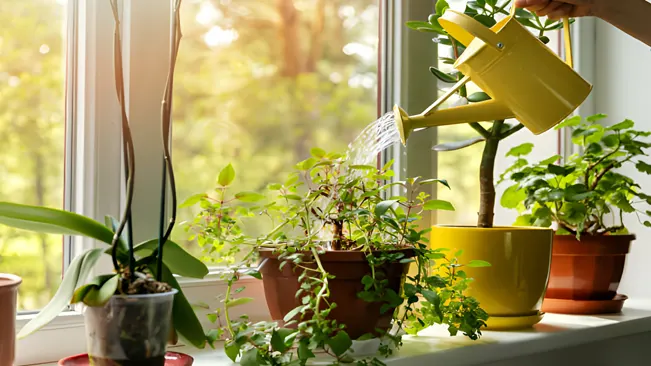
- Watering Schedule: Only water your plants when the top inch of soil is dry. Use your finger to check the soil moisture level.
- Quantity of Water: Ensure that you are not saturating the soil. Provide enough water that it reaches the roots, but avoid waterlogging.
- Type of Plant: Be mindful of the specific water needs of each plant. Some plants require less water than others.
Improve Drainage
Proper drainage is essential to prevent excess moisture, which attracts gnats. Here’s how to improve drainage:

- Drainage Holes: Use pots with adequate drainage holes. This allows excess water to escape instead of accumulating in the pot.
- Potting Mix: Choose a potting mix that is well-aerated and drains well. Mixes with perlite or vermiculite can improve drainage.
- Elevating Pots: Elevate pots from their saucers to avoid water pooling at the bottom, which can be a habitat for gnats.
Keep Your Plant Area Clean
A clean environment is less inviting to gnats. Here are some cleaning tips:
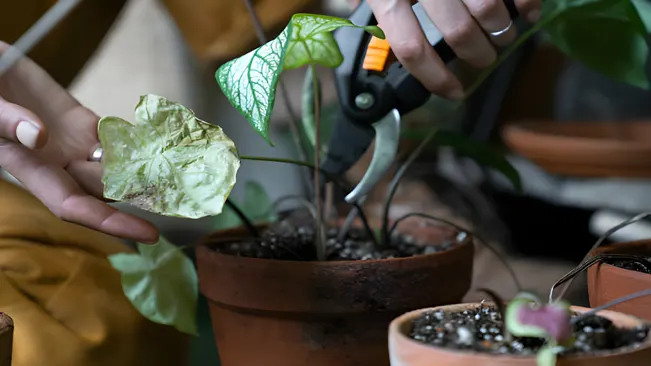
- Remove Dead Plant Matter: Regularly clear away dead leaves and debris from the top of the soil and around your plants. Decaying plant matter is an ideal food source for gnat larvae.
- Clean Pot Surfaces: Wipe down the outside of your pots to remove any algae or mold, which can also attract gnats.
- General Cleanliness: Keep the area around your plants tidy and free of food scraps or other organic matter.
Effective Solutions
If gnats have already invaded, here’s what you can do:
Yellow Sticky Traps
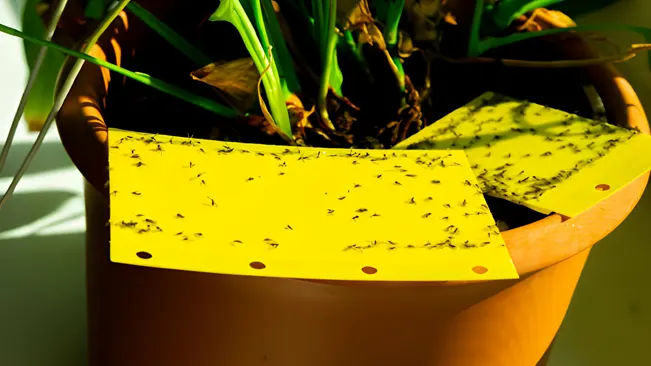
- How They Work: These are bright yellow cards coated with a sticky substance. The color yellow attracts adult gnats, and once they land on the card, they get stuck and can’t escape.
- Application: Place the traps near the affected plants. Position them at the soil level or just above the plant canopy to catch the most gnats. Replace them as they become covered with insects.
Neem Oil or Insecticidal Soaps
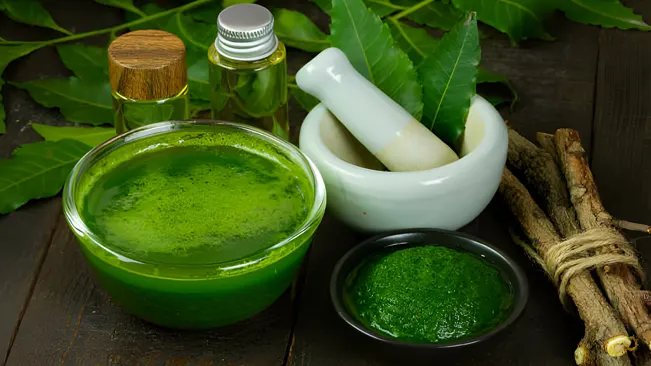
- How They Work: Neem oil is a natural pesticide extracted from the neem tree’s seeds. Insecticidal soaps, on the other hand, are formulated to kill insects upon contact without harming plants.
- Application: Dilute neem oil or insecticidal soap as per the instructions and apply it directly to the soil and the plant. These solutions target the larvae and prevent them from maturing into adults. Repeat the application as directed for the best results.
Hydrogen Peroxide Solution
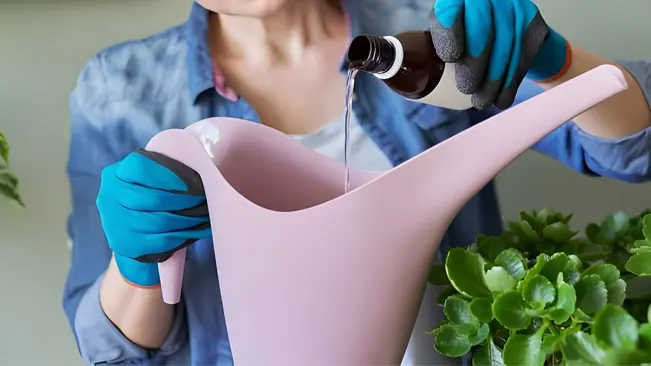
- How It Works: Hydrogen peroxide (H₂O₂) breaks down into water and oxygen. This reaction is harmful to the larvae and eggs in the soil but safe for plants.
- Application: Mix one part of 3% hydrogen peroxide with four parts water. Water the infested soil with this mixture. The oxygen released from the breakdown of hydrogen peroxide helps to aerate the soil and kills the gnat larvae.
Diatomaceous Earth
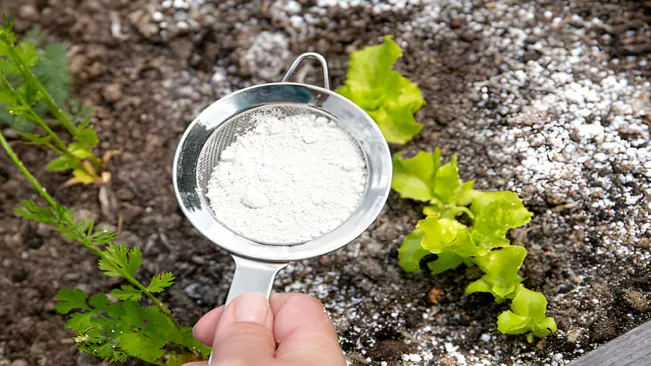
- How It Works: Diatomaceous Earth (DE) is made from fossilized remains of tiny aquatic organisms called diatoms. Its microscopic sharp edges can cut through the exoskeletons of gnats, causing them to dehydrate and die.
- Application: Sprinkle a thin layer of food-grade DE on top of the potting soil where gnats are present. It’s most effective when dry, so apply it after watering your plants and allow the soil to dry out.
Biological Control: Bacillus thuringiensis var. israelensis (BTI)
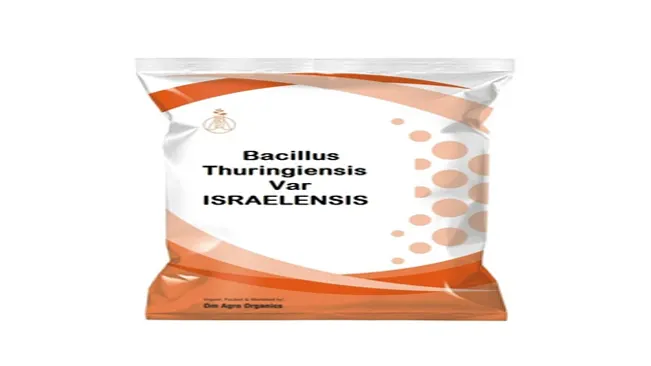
- How It Works: BTI is a naturally occurring bacterium that produces toxins harmful to certain insects, including fungus gnat larvae. It specifically targets the larvae’s digestive system, causing them to stop feeding and die.
- Application: Products containing BTI come in various forms, like granules or liquid. Follow the instructions for application. It’s safe for plants, beneficial insects, animals, and humans.
Conclusion
Successfully eliminating gnats from your plants requires a blend of preventive measures and targeted treatments. Using a combination of methods like yellow sticky traps, neem oil, hydrogen peroxide solutions, diatomaceous earth, and biological controls like BTI ensures a comprehensive approach to controlling these pests. Consistent application and monitoring are crucial for long-term success in keeping your plants gnat-free.
FAQs (Frequently Asked Questions)
1. What are the signs of a gnat infestation in my houseplants?
Look for adult gnats flying around the plants or sitting on the soil, and tiny larvae or white threads in the soil.
2. Why are gnats attracted to my houseplants?
Gnats are attracted to moist environments and organic matter in the soil, which are ideal for laying eggs and feeding their larvae.
3. How can I prevent gnats from infesting my plants?
Avoid overwatering, improve soil drainage, use pots with drainage holes, and keep the plant area clean by removing dead leaves and debris.
4. Are yellow sticky traps effective against gnats?
Yes, they are effective in trapping and reducing the adult gnat population.
5. How does neem oil help in getting rid of gnats?
Neem oil acts as a natural insecticide that disrupts the life cycle of the gnats, especially targeting the larvae in the soil.
6. Can I use household hydrogen peroxide to treat gnat infestations?
Yes, a diluted solution of hydrogen peroxide (one part hydrogen peroxide to four parts water) can be used to kill larvae in the soil without harming the plants.
7. What is diatomaceous earth and how does it work against gnats?
Diatomaceous earth is a natural, powdery substance made from fossilized diatoms. It works by dehydrating the gnats through its abrasive properties.
8. How effective is Bacillus thuringiensis var. israelensis (BTI) against gnats?
BTI is highly effective as it specifically targets and kills gnat larvae, interrupting their life cycle.
9. Can overwatering my plants lead to a gnat problem?
Yes, overwatering creates a moist environment that is ideal for gnats to breed.
10. Are there any natural predators that can help control gnat populations?
Yes, beneficial insects like hypoaspis miles or nematodes can be introduced to the soil to feed on gnat larvae.

Kristine Moore
Forestry AuthorI'm Kristine Moore, a seasoned garden landscaping professional with over 30 years of experience. My extensive career has been dedicated to transforming outdoor spaces into stunning, sustainable landscapes. With a deep understanding of horticulture, design principles, and environmental stewardship, I have become a respected figure in the field, known for creating harmonious, visually appealing, and eco-friendly gardens. My commitment to excellence and continuous learning in landscaping trends and techniques has solidified my reputation as an expert in garden design and implementation.

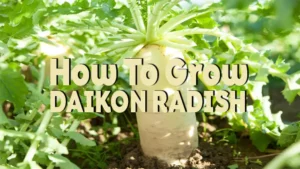
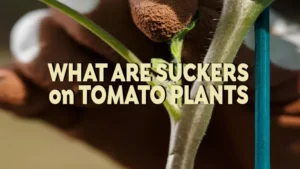
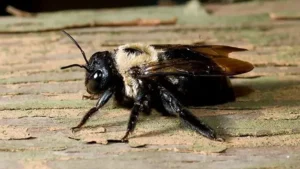
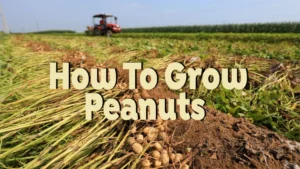

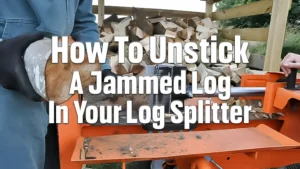
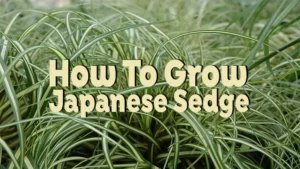

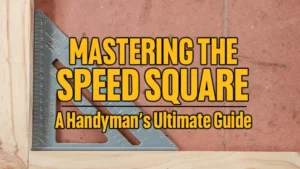
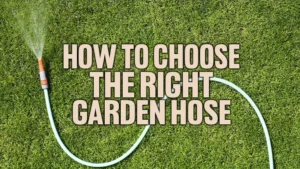
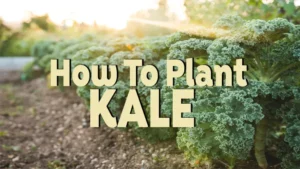

Leave your comment